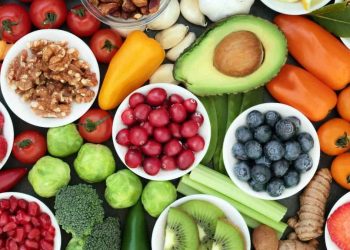Reducing sugar intake is a good idea, as it reduces the risk of many diseases and improves overall health.
Many adults consume far more sugar than necessary. Reducing added sugar intake is, therefore, a healthy idea for most people. Some people may wish to take it a step further and completely eliminate sugar from their diet. The sugar-free diet has grown in popularity as people continue to search for effective ways to live a healthy lifestyle or lose weight. However, despite all the health benefits of a sugar-free diet, there are also a few things to consider. In this article, we’ll walk you through eight practical tips for reducing your sugar intake, as well as some of the risks to be aware of.
Why cut out sugar?
Reducing sugar intake can improve a person’s health. Many adults consume far more sugar than authorities recommend. The Western diet means that adults, on average, get about 15% of their calories from added sugars alone. This sugar consumption does not even include natural sugars, such as those found in products like fruit and milk.
Excessive sugar consumption has links to several harmful health conditions, including:
– obesity and metabolic syndrome
– heart disease
– type 2 diabetes
– high blood pressure
– high cholesterol
– chronic inflammation
– non-alcoholic fatty liver disease
– dental plaque and cavities
Reducing the amount of sugar in the diet can help a person reduce the risk of these health problems. Replacing foods high in sugar with healthy foods can help a person get all of the essential vitamins and minerals without the extra calories. It can also help him lose weight, if necessary.
8 tips for cutting out sugar
Here are eight simple tips for eliminating sugar from your diet:
1. Go slowly, gradually
One of the most important things to remember when changing your diet is to do it gradually. Switching from a diet full of sugar to a diet without sugar should be a slow process. It may help to start by eliminating the most obvious sources of sugar. One can easily avoid baked goods such as cakes, croissants, and pain au chocolat. Cutting out sweets and sugary drinks is also a great place to start. You can also try reducing the amount of sugar and cream that you add to your coffee or tea until you don’t add any at all. Adopting a sugar-free diet can help a person retrain their palate, which means they’ll be less likely to crave the missing sugar.
2. Read product labels
Once a person has succeeded in eliminating the most obvious sugar from their diet, they may be interested in other products that contain sugar. Reading product labels can help her identify the types of sugars to avoid. Sugar has many names and is found in many different syrups and concentrates. There are at least 61 different names for sugar on food labels. The most common are:
– cane
sugar – brown sugar
– corn syrup or high fructose corn syrup
– beet
sugar – coconut sugar
– maple
syrup – agave
syrup – rice syrup
– apple or grape juice concentrate
– honey
Also, be aware that anything on an ingredient list that ends in “-ose” is also a type of sugar. Here are some examples of these ingredients:
– sucrose
– glucose
– dextrose
– fructose
– lactose
Sugars are hiding in many supermarket foods. Reading the label is essential for people who want to follow a sugar-free diet. Products such as salad dressings and condiments, pasta sauces, breakfast cereals, milk and granola bars often contain sugar in their ingredient list.
3. Avoid Simple Carbs
Many sugar-free diets also recommend avoiding simple carbohydrates. Simple carbohydrates include white flour, white pasta, and white rice. The body quickly converts carbohydrates from these foods into sugar. This process causes a spike in blood sugar. Simple carbohydrates can usually be replaced with whole grain products.
4. Avoid artificial sugars
Artificial sugars are a controversial topic in the diet industry. They are much sweeter than sugar but contain few or no calories. However, consuming artificial sugars can trick the body into believing that it is actually sugar. This can intensify a person’s sugar cravings, making it harder to stick to a sugar-free diet. For this reason, a person on a sugar-free diet should avoid artificial sugars. People can also look for the chemical names of these sweeteners on ingredient lists, especially in products marketed as low in sugar or calories or as diet foods.
Chemical names include:
– aspartame
– sucralose
– saccharin
– acesulfame K or acesulfame potassium
5. Do not consume sugar
It may be easy to avoid sugar in processed foods. However, sugary drinks are among the most important sources of added sugars in the diet. They include sodas, specialty coffees, sweetened teas, and fruit juices. Replacing these beverages with unsweetened herbal tea, unsweetened coffee, sparkling mineral water, or just plain water can help a person stay hydrated without increasing their sugar intake.
6. Choose whole foods
A person on a sugar-free diet should also strive to eat whole foods. Processed foods are more likely to contain refined ingredients or added sugars. Diets that emphasize whole, whole foods include the following options:
– vegetables
– fruits
– lean meats, poultry or tofu
– fish
– whole, unprocessed grains and legumes
– nuts and seeds
Some people may choose to keep a small amount of dairy products in their diet, such as plain yogurt, simple cheeses and Milk.
7. Plan your meals
It’s hard to stick to a diet without a plan. When a person is hungry, they are more likely to snack on sugar if they don’t have nutritious meals and healthy alternatives on hand. Many people take a day to shop and prepare their meals for the entire week. With healthy ready-made foods, they’re less tempted to splurge on a candy bar or soda.
8. Spice it up
The palate often lacks sugar because there are no other flavors to replace it. However, people can easily add many sweet-tasting herbs and spices to foods and drinks to replace sugar. Cinnamon, nutmeg, cardamom and vanilla are common substitutes. They can be a tasty addition to coffee, oatmeal or yogurt.
Health benefits of a sugar-free diet
Eliminating added sugars and maintaining a diet rich in whole foods has many benefits for the body. Specifically, reducing sugar intake and adopting a healthy diet can help people:
– lose weight and prevent obesity
– have clearer skin and reduce the risk of skin cancer
– prevent mood swings, as a 2017 study linked a high-sugar diet to changes mood
– reduce inflammation
– reduce the risk of type 2 diabetes, as sugar can increase the risk of obesity, which can lead to type 2 diabetes.
Risks and Considerations
Before adopting a sugar-free diet, a person should consider whether they also want to eliminate natural sugars. Natural sugars are present in fruits and some dairy products. Although proponents of some sugar-free diets recommend eliminating fruit, it may not be the healthiest choice. Fruit can provide several essential nutrients, including fiber, antioxidants, and other healthy compounds that help protect the body against disease.
Including whole fruits in a sugar-free diet may benefit your health. However, if a person chooses to eat dried fruit, they should do so in moderation and look for varieties with no added sugar. Eliminating sugar from the diet is not a complete weight loss solution. It is part of a lifestyle change that must also involve regular exercise and a nutritious diet. Anyone wishing to start following a sugar-free diet should consult a doctor, dietician or nutritionist, especially if they have any underlying health conditions.








